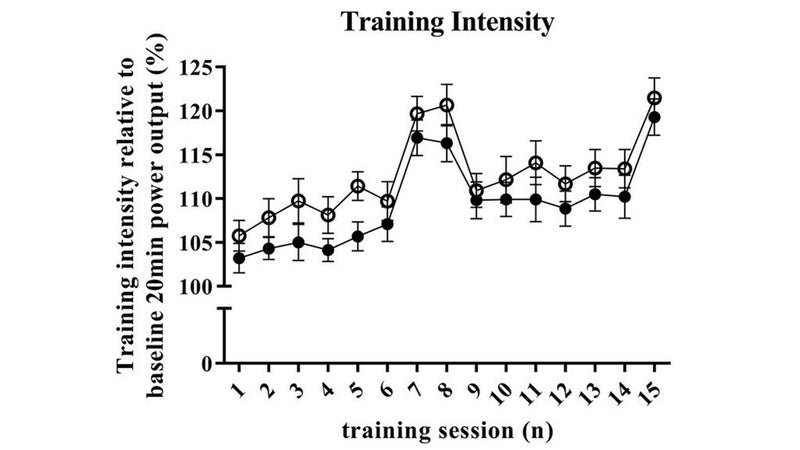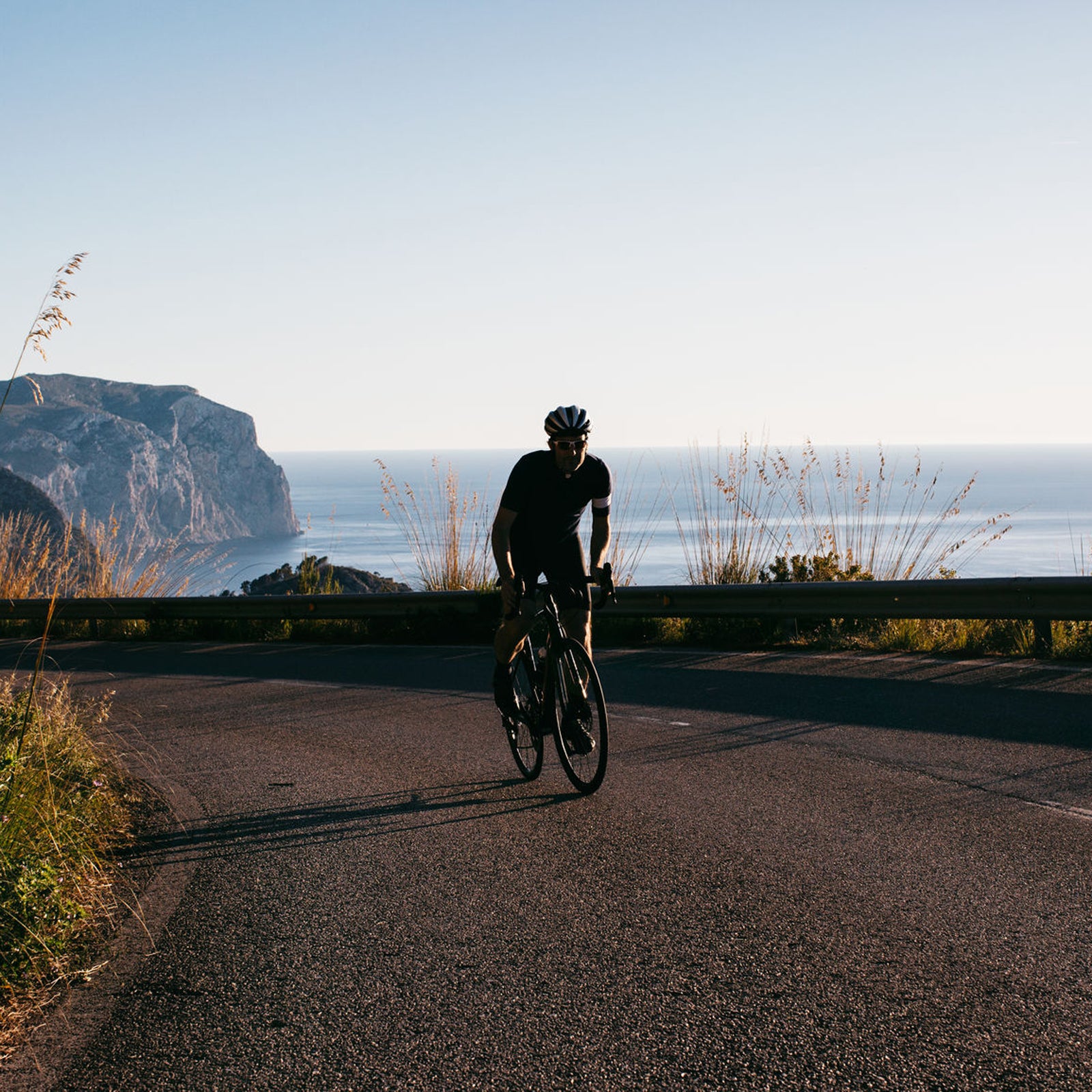For a hot trend that’s being touted as the in sports science, supplemental oxygen has a very long history. More than a century ago, a swimmer name Jabez Wolffe a long rubber tube to breathe in pure oxygen while crossing the English Channel (he narrowly missed being the first to accomplish the feat, giving up just a quarter-mile from France). Roger Bannister, the original four-minute miler, on the endurance-boosting effects of oxygen-enriched air just a few weeks after his famous race in 1954.
In other words, there’s not much doubt that breathing oxygen-rich air during endurance exercise enhances your performance: it’s simply a mirror image of the endurance-sapping effects of thin mountain air. The catch is that you can’t strap an oxygen tank to your back in competition. So athletes and scientists have been searching for other ways to harness the power of oxygen, most notably by using it during workouts—an approach known as hyperoxic training.
(The other main option, for the record, is huffing it during breaks in competition to—supposedly—enhance recovery. Last December, German slalom skier Stefan Luitz was disqualified after winning a World Cup event in Colorado for using an oxygen mask between runs. Inhaling oxygen is legal but was restricted by the International Ski Federation. , the Court of Arbitration for Sport reinstated Luitz’s victory, giving precedence to WADA’s rules.)
That’s the context for on hyperoxic training from a research team in Sweden, co-led by Daniele Cadinale of the Swedish School of Sport and Health Sciences and Robert Boushel of the University of British Columbia, published in Frontiers in Physiology. The idea that supercharging your training with extra oxygen will lead to greater fitness gains makes sense in theory, and has been around , but the evidence that it actually works has been patchy and not especially convincing. That hasn’t stopped its commercialization—indeed, one member of the nine-person Swedish research team has co-founded . The new study puts the concept to its most rigorous test yet—with results that, to be honest, you could spin either way.
The study subjects, all competitive cyclists, completed a six-week training period with a total of 15 interval workouts (either 3 to 4 times 8:00 or 4 times 4:00, at the maximal sustainable pace, with 3:00 easy recovery) done in the lab while breathing either 30 percent oxygen or normal air through a mask. (Normal sea-level air is 21 percent oxygen.) In addition, all subjects were assigned another ten easy rides of two to four hours breathing normal air. The goal of the training protocol was to simulate the normal mixed training for competitive cyclists. There were 32 cyclists initially, but just 23 managed to get through the training period while completing at least 85 percent of the workouts, which was the threshold required for inclusion in the final results.
One strength of the study is that it was double-blinded: neither the cyclists nor the scientists supervising the training sessions knew who was getting extra oxygen and who wasn’t. Since the cyclists’ power output and heart rate were hidden, they couldn’t get any hints about whether or not they were getting oxygen. Another strength is that the study involved muscle biopsies and blood tests before and after the training period, in an attempt to determine what physiological parameters (if any) are juiced by extra oxygen.
The researchers’ working hypothesis was that hyperoxic training would provide an extra boost to the mitochondria in your muscles, allowing them to process more oxygen (and thus produce more power without fatiguing) during hard exercise. In well-trained endurance athletes pushing hard, blood often rushes by the lungs so quickly that it doesn’t pick up a full load of oxygen. That, in turn, leaves your the muscles with unused oxygen-processing capacity. By breathing oxygen-enriched air, you should be able to fully load up the blood with oxygen, enabling the muscles to work harder—and, over time, stimulating the muscles to develop even more oxygen-processing capacity.
So you’ve got a study with trained athletes doing a fairly realistic and reasonable training protocol, looking for improvements in performance (which is what we really care about) and testing a hypothesis about why performance should improve—all very good. But here’s where things get a little murkier.
As expected, the cyclists who got extra oxygen did manage to train a bit harder—or rather, they trained at a higher power output without actually trying harder. The difference wasn’t statistically significant, but the trend was fairly pronounced. Here’s the average power for each of the 15 training sessions for the oxygen group (open circles) and the control group (closed circles), relative to their individual baselines. The high power values for sessions 7, 8, and 15 were the 4:00 intervals; the other workouts were 8:00 intervals.

Performance before and after the training period was measured with a 20-minute all-out time trial. The oxygen group improved their performance by 6.0 percent; the control group improved by 2.4 percent. The difference between the two groups had a p-value of 0.07, narrowly missing the usual threshold of 0.05 for statistical significance. It’s a suggestive result, though not definitive.
But the physiological measurements didn’t find any differences between the two groups. Both improved their VO2max by nearly identical amounts (3.8 versus 3.7 percent). Blood volume and hemoglobin mass didn’t change. And most importantly, the amount and capacity of oxygen-processing mitochondria, measured from the muscle biopsies, wasn’t different between the two groups. The hyperoxic training may (or may not) have made the riders faster, but there’s no hint of why in the results.
There are a few other possible explanations that weren’t directly tested in this study. For example, it may be neuromuscular: the extra oxygen lets you train faster, which improves the signaling from brain to muscle at the new higher speed. If that were the case, you might expect to get the same effect from motorpacing on a bike, or even from running on a slight downhill. It seems sort of unlikely, but who knows?
Ultimately, I expect athletes will continue to experiment with the technique. It probably makes the most sense for those living at relatively high altitudes who need to get some high-quality workouts in but can’t conveniently drive down to sea level. That’s a major attraction for endurance athletes at the Olympic Training Center in Colorado Springs: an that allows athletes living in the mountains (and getting the resulting boost in red blood cells) to do a few high-quality workouts a week at simulated sea level. For the record, until proven otherwise, it does not make sense to try getting oxygen from a can.
As for whether it’s useful to boost oxygen to higher-than-sea-level percentages during training, this study isn’t quite the definitive evidence that the authors (particularly the one with the start-up company) might have hoped for. The results are suggestive, and add to a pile of previous suggestive-but-not-definitive studies. But personally, until we have a better handle on the underlying physiology, my threshold for agreeing to shift a bunch of my workouts to a basement room where I have to wear a mask over my face remains unbreached.
My new book, , with a foreword by Malcolm Gladwell, is now available. For more, join me on and , and sign up for the Sweat Science .


